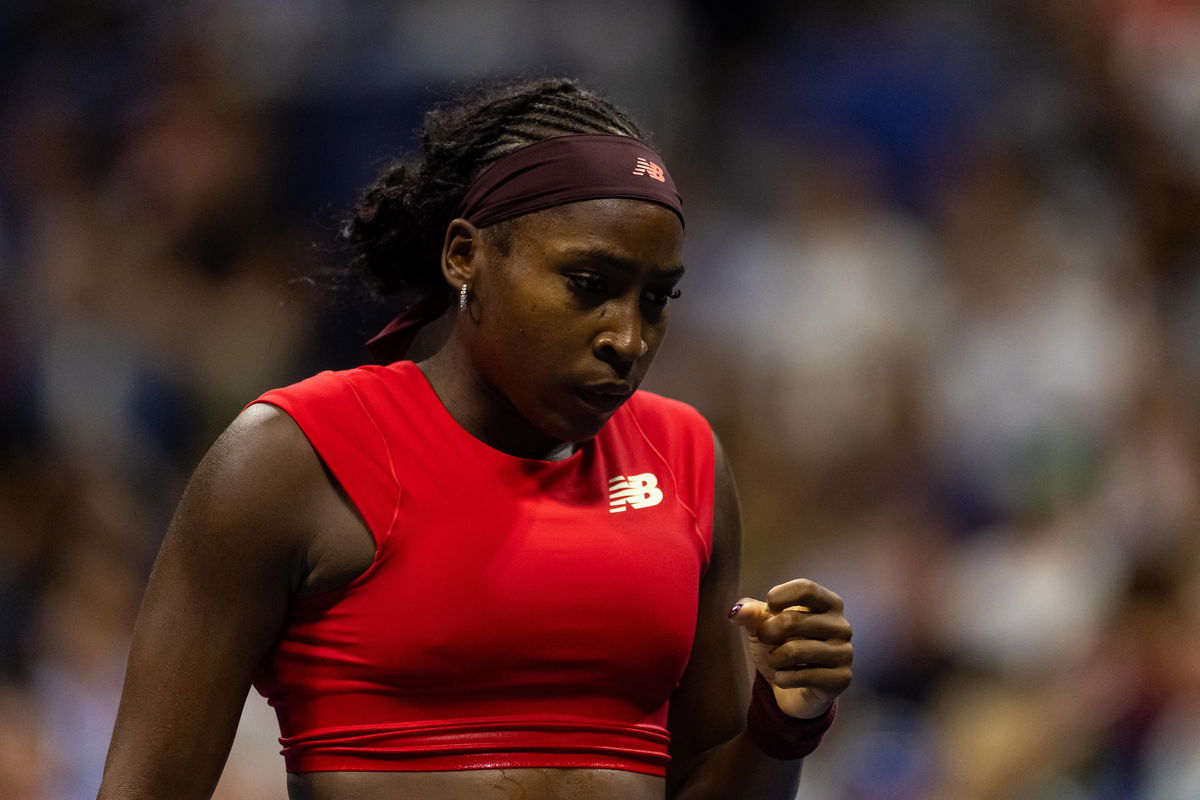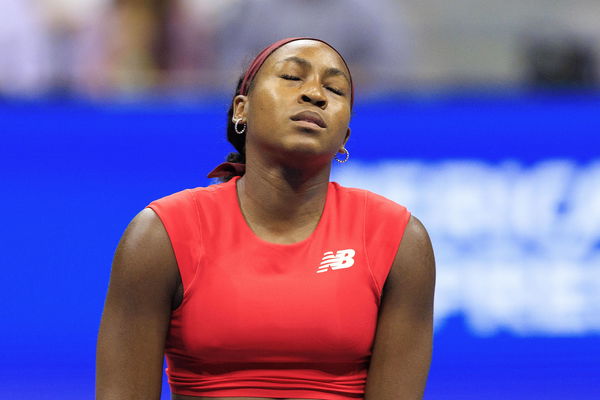
Imago
Tennis: US Open Aug 26, 2025 Flushing, NY, USA Coco Gauff of the United States in action against Ajla Tomljanovic of Australia in the first round of the womens singles at the US Open at Arthur Ashe Stadium in Billie Jean King National Tennis Centre. Flushing Billie Jean King National Tennis Centre NY USA, EDITORIAL USE ONLY PUBLICATIONxINxGERxSUIxAUTxONLY Copyright: xMikexFreyx 20250826_szo_zg8_0272

Imago
Tennis: US Open Aug 26, 2025 Flushing, NY, USA Coco Gauff of the United States in action against Ajla Tomljanovic of Australia in the first round of the womens singles at the US Open at Arthur Ashe Stadium in Billie Jean King National Tennis Centre. Flushing Billie Jean King National Tennis Centre NY USA, EDITORIAL USE ONLY PUBLICATIONxINxGERxSUIxAUTxONLY Copyright: xMikexFreyx 20250826_szo_zg8_0272
Coco Gauff won 48 matches, lost just 16, claimed two singles titles, and finished the year as World No. 3. Any athlete would call that a dream season. Yet amid these milestones, a surprising statistic has emerged, one no player wants to lead, and Gauff finds herself at the top.
Watch What’s Trending Now!
According to WTA statistics, Coco Gauff tops the double-fault list in 2025. She committed 431 double faults, which is 131 more than the second-highest player, Ekaterina Alexandrova, who had 300. The gap continues with Alycia Parks at 296, Linda Noskova 289, Marta Kostyuk 261, and both Amanda Anisimova and Dayana Yastremska 260.
Further down the list, Jessica Bouzas Maneiro had 244, Ajla Tomljanovic and Jelena Ostapenko 241 each, and Ashlyn Krueger 235. With numbers like these, it’s impossible to ignore the recurring shadow over Coco Gauff ‘s serve.
ADVERTISEMENT

Imago
August 28, 2025, Flushing Meadows, New York, USA: Coco Gauff reacts after losing a game during a match against Donna Vekic on Day 5 of the 2025 US Open at USTA Billie Jean King National Tennis Center on Thursday August 28, 2025 in the Flushing neighborhood of the Queens borough of New York City. JAVIER ROJAS/PI Flushing Meadows USA – ZUMAp124 20250828_zaa_p124_107 Copyright: xJavierxRojasx
This struggle isn’t new. Last year, she was the only player to serve over 400 double faults, hitting 430 in total. Marta Kostyuk came second with 370, followed by Daria Kasatkina at 316, Paula Badosa at 310, and Alexandrova at 296. Clearly, her serve has been a recurring challenge. The question is how such a weakness impacts even the most talented players under pressure.
A double fault happens when a player misses both their first and second serve, giving the point directly to the opponent. Being at the top of this list doesn’t mean she isn’t talented; it shows that her serve, even in an otherwise perfect game, can/is still falter.
ADVERTISEMENT
Even with this problem, 2025 was a historic year for her. Coco Gauff won her second Grand Slam at the French Open, becoming the first American woman to win a clay-court Major since Serena Williams in 2015. She helped the United States win the United Cup on her debut and extended her perfect record in hard-court finals by winning the Wuhan Open in October.
Off the court, Coco Gauff also broke records. At just 21, she became the highest-paid female athlete for the second year in a row. But despite all the success, her serve continues to be her Achilles heel. And she knows it. Gauff is fully aware that this is a weakness she must address. The big question is: is she actively working to fix it?
ADVERTISEMENT
Coco Gauff is fighting to fix her serve
Coco Gauff’s serve has been one of the biggest challenges in her game, and 2025 was no different. At the end of last year’s US Open, she hired grip expert Matt Daly to help improve both her forehand and her serve. Together, they celebrated a French Open win in June. But by August, the partnership ended, leaving Gauff still searching for a solution to her service struggles.
The problem became obvious in matches against Moyuka Uchijima at Indian Wells and Danielle Collins in Montreal, where she committed 21 and 23 double faults. These matches showed that her serve was not reliable enough, prompting Gauff to make a big decision. She called in biomechanics expert Gavin MacMillan, who had previously assisted Aryna Sabalenka in resolving her serving problems. Gauff thought it was the best move for her game; despite the unexpected timing, it was just before the US Open.
ADVERTISEMENT
Working with MacMillan was “like learning a new language,” according to Coco Gauff. She has been relearning her serve from scratch, practicing so hard that her shoulder hurt. “I know this is the part of my game that needs to improve if I want the results I want,” she said. She is determined to fix the technical flaws in her motion, knowing that it is not just a mental issue but a mechanical one.
There are already signs of improvement. In a WTA Finals match, she double-faulted only three times and won 75% of her second-serve points. But consistency remains a challenge. In the same tournament, she hit 17 double faults against Jessica Pegula.
Even with these serving struggles, Coco Gauff ’s game remains strong. Her return game is one of the best on tour; she won 48.8% of return points this season, the highest among regular players, and she also won the most return games at 46.3%. Surely, she wants her serve to become a weapon, just as reliable in singles as it is in doubles. “I feel it’s better, and I’m not making as many double faults as before,” she said.
ADVERTISEMENT
For now, the work is hard and sometimes painful, but every practice and adjustment is part of building a stronger, more complete game for the future.
ADVERTISEMENT
ADVERTISEMENT
ADVERTISEMENT

